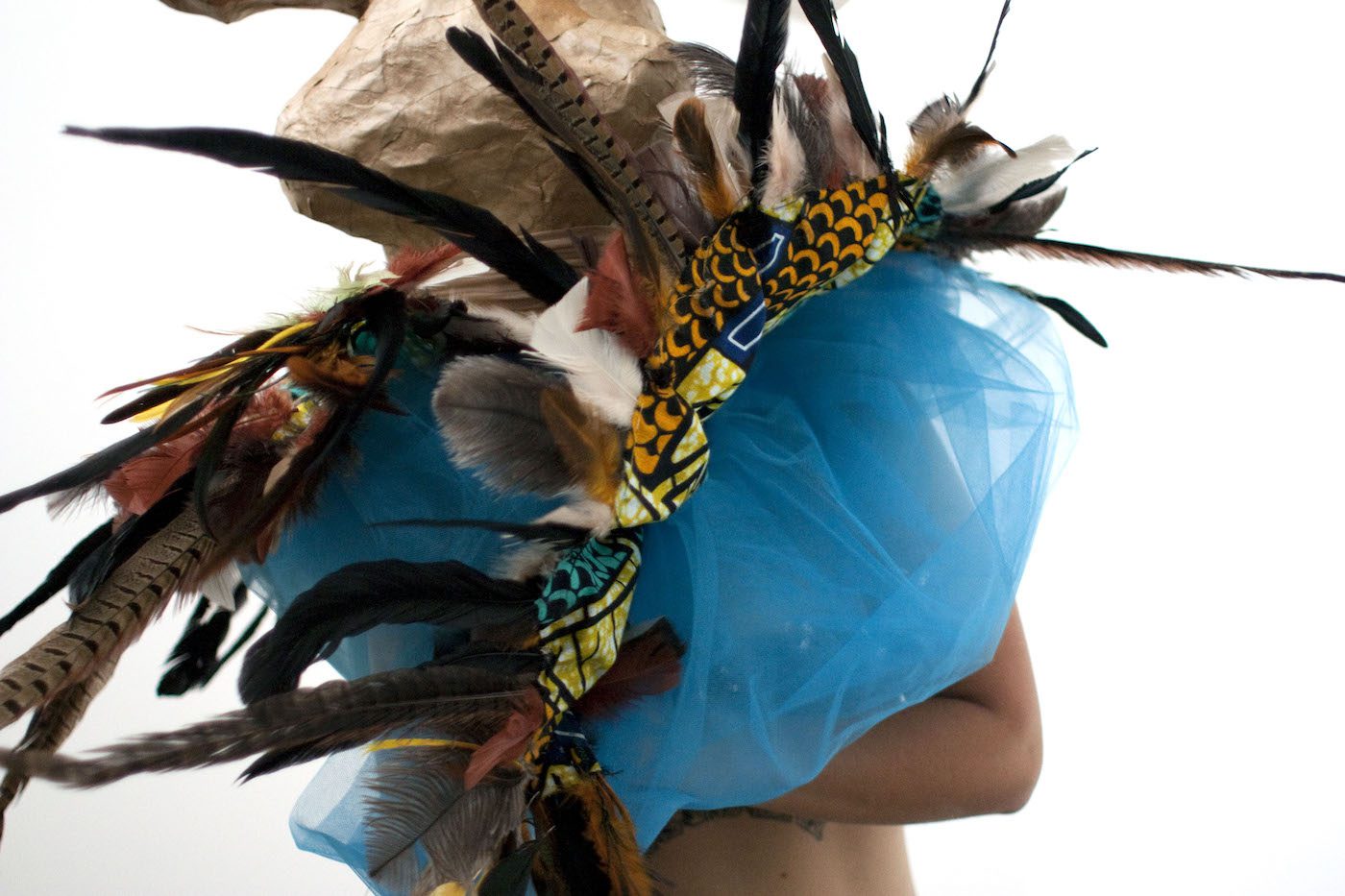Anna Martine Whitehead is an interdisciplinary artist and dancer who is interested in quantum mechanics and its connection to the human body. C&’s Tash Moore spoke with her about her practice, physics, and her perfect dance dinner date.

Anna Martine Whitehead. Image credit: the artist
Contemporary And: In what ways do you use your body to demonstrate a concept of personal freedom?
Anna Martine Whitehead: The longer I work, the less interested I am in demonstrating anything, at least in the ways I understand that term. As a young artist, I made the decision to shift away from purely object-based work, specifically painting, to a more time-based approach. This shift occurred for a number of reasons, including a growing desire to synthesize my rudimentary understandings of metaphysics and particle physics through an integration into my own body. How might my body experience a black hole, for example? That is an interesting question to me. We can’t “see” these things – they cannot be demonstrated – but we can feel them and experience them sensorially.
This is my daily practice, but in terms of a general artistic practice: I have never been too interested in “the personal,” unless I could use it as a case study to explore the more broadly political. And I’m not sure I believe in “personal freedom.” Our personhood is so connected to collective expressions of the self, and the more I invest in quantum mechanics and prison abolition, the less and less respect I have for borders. Borders, which exist in part to perpetuate the false notion that I can be free while others are not. So many scholars interrogating the intersections of quantum theory, personhood, and anthropocentric epistemologies – Donna Haraway, Michelle Wright, and Timothy Morton to name just a few – would argue against this. And Fred Moten, Cedric Robinson, Saidiya Hartman, and many others might argue that I could only ever be free if unfreedom existed.
C&: During the past few years your work has focused on prison abolition and decentralizing whiteness. How do you tie the work you do to your understanding of a collective freedom?
AMW: I think the abolition of the carceral state, the surveillance state, and white supremacy would help us a lot when it comes to getting free!
C&: Where do you see dance headed in the US education system?
AMW: I have not taught in schools or kindergarten in about a decade and I don’t have children, so I may not be able to speak about that. I’m specifically interested higher education at the moment. The mad scramble that Western fine and visual arts institutions have been engaged in to figure out how to bring in and back patrons, and to provide an experience that is more interesting than our devices, has led to occasionally interesting moments in the evolution of dance. Art schools, at least, are marginally responsive to this newer shift in the market. I have a fuzzy concern about the de-skilling of everything, but I can’t really promote it with a straight face since I never went to a dance school myself and I deeply distrust ballet as a training regimen. I wish schools would teach ballet as ethnic dance; I think that would change the world. In the meantime, I like teaching dance to non-dancers, which is what I do at the School of the Art Institute of Chicago (SAIC) and Stateville Prison in Joliet, Illinois. Especially at SAIC, students don’t necessarily consider my classes as dance training. And that is just fine with me. My personal goal is not more “dancers” for the world but rather that the world has more “embodied people.”
C&: Historically, if you could have dinner with any three dancers, who would they be?
AMW: I love this question! Of course, Josephine Baker and Katherine Dunham. Do we get to count Zora Neale Hurston? But then I’m worried it’s not a broad enough group. If Zora doesn’t count, my third pick would be a dancer from about 100 years in the future. I’m interpreting your word “historically” in the Africanist sense, where history is also the future. I’d be curious to talk to someone dancing in 100 years from now: about how technology, the internet of things, and cyborg-living in general have impacted their sense of the body. I’d also be curious to see how that dancer thinks about being an artist after massive species die-off and the kind of mass migration “crisis” that I think we’re only starting to be able to imagine over here in 2019.
Anna Martine Whitehead lives in Chicago. She writes, makes things, and makes performances addressing a Black queer relationship to time.
Tash Moore is prolific Detroit booster, social entrepreneur and activist deeply passionate about promoting diversity & inclusion. She is coordinator of the 2019 C& Critical Writing Workshop in Detroit.
This text was commissioned within the framework of the project “Show me your Shelves”, which is funded by and is part of the yearlong campaign “Wunderbar Together (“Deutschlandjahr USA”/The Year ofGerman-American Friendship) by the German Foreign Office.
More Editorial